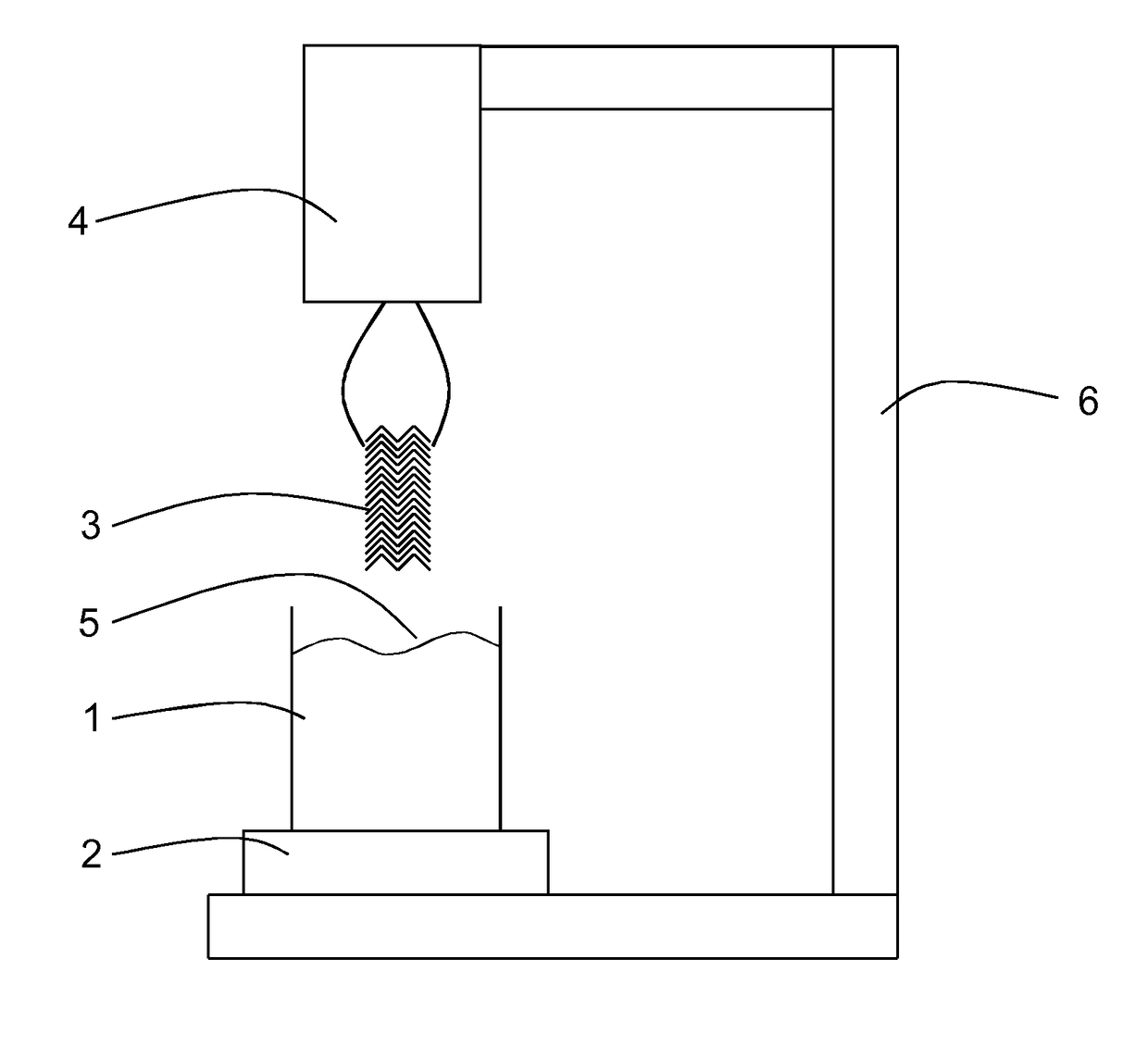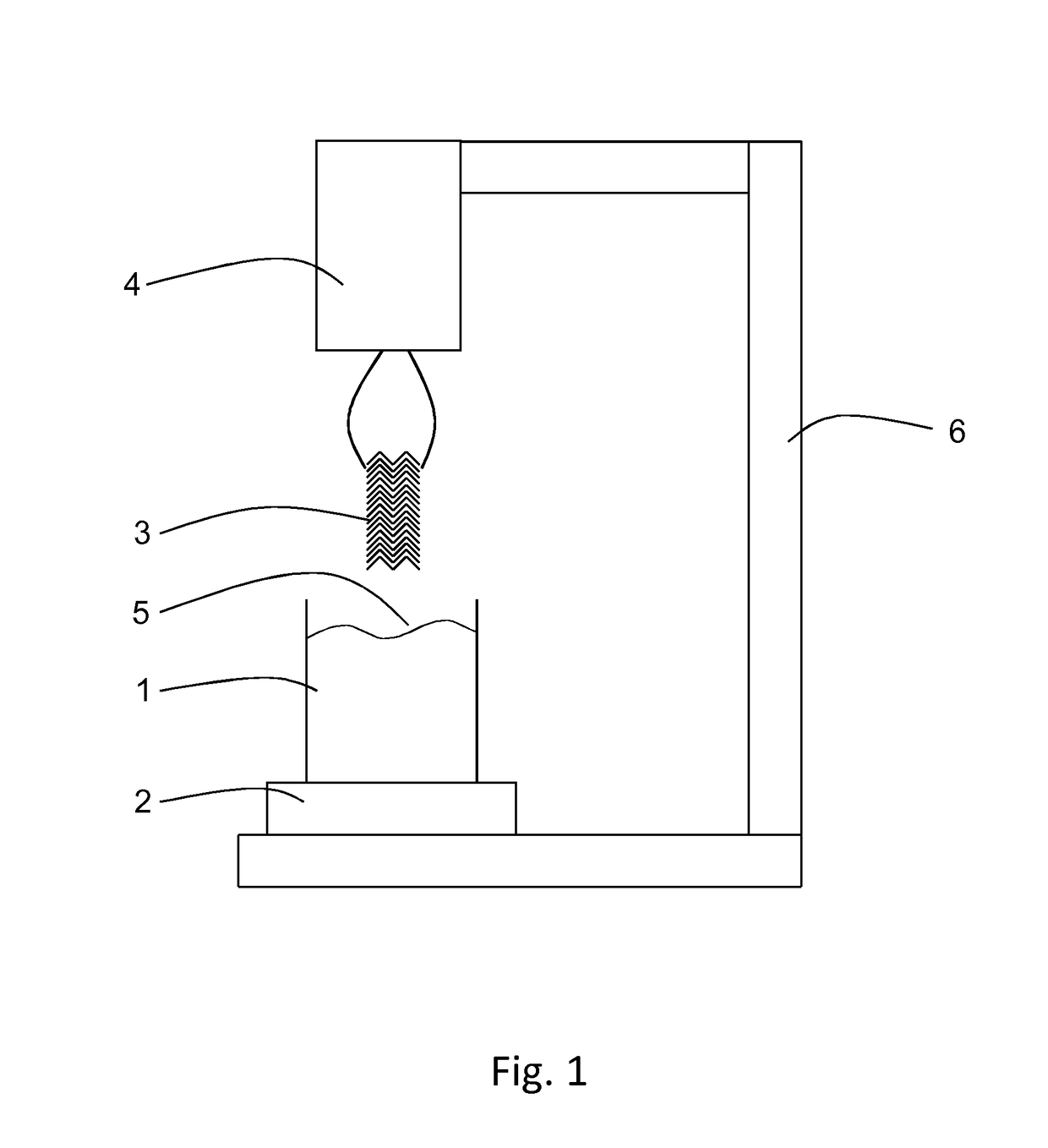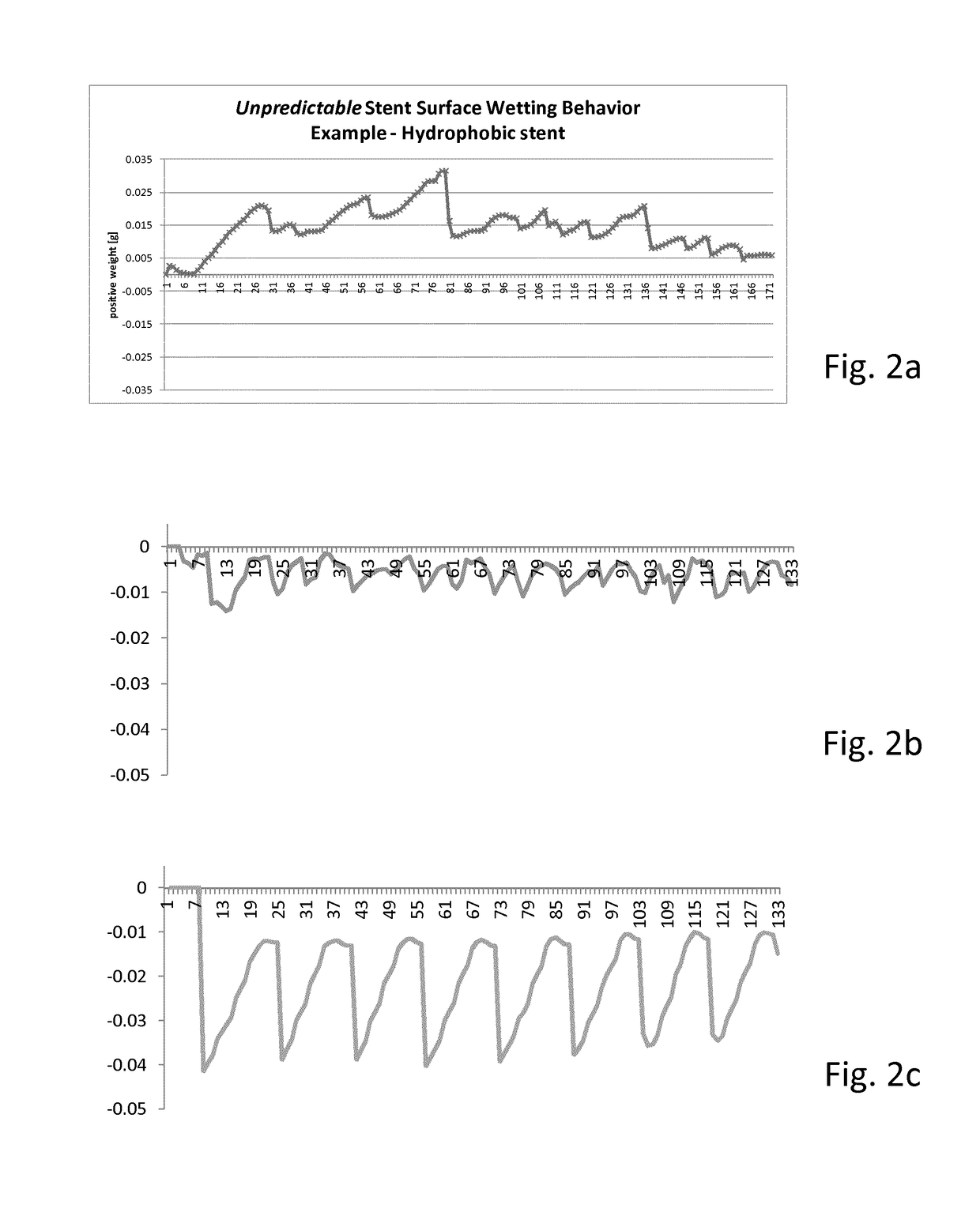Method and device for determining surface characteristics of stents, and stent having defined surface characteristics
a surface characteristic and stent technology, applied in the field of determining the surface characteristics of stents, can solve the problems of contamination, no conclusive studies have been made regarding the purity of the stent surface, and stents implanted in blood vessels entail certain risks for patients, etc., to achieve reliable evaluation of the surface quality, simple and quick determination of surface characteristics, and high level of cleanliness
- Summary
- Abstract
- Description
- Claims
- Application Information
AI Technical Summary
Benefits of technology
Problems solved by technology
Method used
Image
Examples
Embodiment Construction
[0056]Shown in FIG. 1 is an embodiment of a device for determination of surface characteristics of a stent for implantation in a body lumen according to the present invention. The device is provided to determine a wetting behavior of a stent surface around the circumference of a stent and its length, preferably over its entire length and the course wetting behavior. The device has for this purpose a liquid container 1 with a liquid with a defined surface tension. The liquid container 1 and the liquid have together a reference weight that is measured by a measuring device 2. The size of the liquid container and the liquid volume are coordinated with the measurements of a stent 3. In the embodiment of a meniscus in the case of a hydrophile surface, during immersion or removal of the stents, liquid is elevated or respectively in the case of a hydrophobic surface liquid is repelled. This leads to a significant change of the weight measured by the measuring device. Thereby care is to be ...
PUM
 Login to View More
Login to View More Abstract
Description
Claims
Application Information
 Login to View More
Login to View More - R&D
- Intellectual Property
- Life Sciences
- Materials
- Tech Scout
- Unparalleled Data Quality
- Higher Quality Content
- 60% Fewer Hallucinations
Browse by: Latest US Patents, China's latest patents, Technical Efficacy Thesaurus, Application Domain, Technology Topic, Popular Technical Reports.
© 2025 PatSnap. All rights reserved.Legal|Privacy policy|Modern Slavery Act Transparency Statement|Sitemap|About US| Contact US: help@patsnap.com



